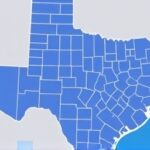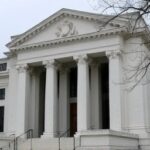In a rare twist for the world’s most powerful central bank, the Federal Reserve is hurtling toward what analysts are calling a potential tie vote at its upcoming Federal Open Market Committee (FOMC) meeting, underscoring profound rifts among policymakers. With inflation stubbornly hovering above the 2% target and economic indicators flashing conflicting signals, the decision on interest rates could deadlock, forcing Chair Jerome Powell to navigate uncharted waters in monetary policy. This scenario, unprecedented in recent memory, has markets on edge as investors brace for uncertainty that could ripple through global finance.
Cracks Widen in FOMC as Hawks and Doves Clash on Rate Cuts
The Federal Reserve‘s policymaking body, the FOMC, is exhibiting deeper divisions than seen in years, with hawkish members pushing for sustained high interest rates to combat lingering inflation, while doves advocate for early cuts to prevent an economic slowdown. Sources close to the committee reveal that at least four regional Fed presidents are leaning toward maintaining the current federal funds rate at 5.25% to 5.50%, citing persistent price pressures in sectors like housing and services. In contrast, progressive voices from districts like San Francisco and Chicago argue that recent cooling in job growth warrants a 25-basis-point reduction, fearing a recession if monetary policy remains too tight.
Jerome Powell himself has remained cryptic in public remarks, but in a recent speech at the Jackson Hole symposium, he hinted at the challenges: “We are navigating a complex landscape where data dependencies have never been more critical.” This internal schism, analysts say, stems from the FOMC’s 12 voting members—seven governors and five rotating bank presidents—where even a single defection could tip the scales toward a 6-6 tie. Historical precedents are scarce; the last notable split occurred in 2011 during the post-financial crisis recovery, but a outright tie would mark a first in the modern era of the Federal Reserve.
Market watchers point to the September FOMC meeting as the flashpoint, where projections from the Summary of Economic Projections (SEP) could expose these fractures. If the dot plot shows a median expectation for no rate change but with wide dispersion, it might signal the impasse. Economists at Goldman Sachs have upped the odds of a tie to 20%, up from 5% last quarter, based on leaked minutes from the July session that highlighted “vigorous debate” over the inflation outlook.
Inflation’s Stubborn Grip Challenges Fed’s 2% Mandate
At the heart of the FOMC’s turmoil is inflation, which, despite aggressive rate hikes since March 2022, refuses to fully retreat to the Federal Reserve’s 2% target. The latest Consumer Price Index (CPI) data for August showed core inflation at 3.2%, a slight dip from 3.6% in July but still well above pre-pandemic levels. Services inflation, excluding shelter, climbed to 5.1%, driven by wage pressures in a tight labor market where unemployment sits at a low 3.7%.
The Producer Price Index (PPI) offers a glimmer of hope, with final demand prices rising just 1.8% year-over-year, the slowest pace since 2020. However, this mixed picture has fueled the divide: hawks like Dallas Fed President Lorie Logan argue that premature easing could reignite inflationary spirals, referencing the 1970s stagflation era when the Federal Reserve under Paul Volcker hiked rates to 20% to break the cycle. “Inflation expectations are not yet firmly anchored,” Logan stated in a recent interview with Bloomberg, emphasizing the need for vigilant monetary policy.
On the flip side, dovish policymakers reference the Personal Consumption Expenditures (PCE) index, the Fed’s preferred gauge, which eased to 2.5% in July. New York Fed President John Williams has cautioned that “overly restrictive interest rates risk unnecessary economic pain,” drawing parallels to the 2008 crisis when delayed action amplified downturns. These conflicting inflation metrics have left the FOMC grappling with whether current policy is restrictive enough, with real interest rates—nominal rates minus inflation—now at about 2%, a level some economists deem sufficient to cool demand without derailing growth.
Broader context includes supply-chain disruptions from geopolitical tensions, such as the ongoing Ukraine conflict and Red Sea shipping issues, which have kept energy and commodity prices volatile. The Federal Reserve’s own models project inflation averaging 2.6% through 2024, but with upside risks from potential tariffs if U.S. trade policies shift post-election.
Mixed Signals from Labor Market and GDP Fuel Policy Debate
Economic data pouring in ahead of the FOMC meeting is a patchwork of resilience and warning signs, complicating the Federal Reserve’s interest rate calculus. The U.S. economy expanded at a robust 2.8% annualized rate in the second quarter, per Bureau of Economic Analysis figures, outpacing expectations and underscoring consumer spending’s strength—retail sales jumped 0.7% in August alone. Yet, beneath the surface, cracks are emerging: the Institute for Supply Management’s manufacturing index dipped to 47.2, signaling contraction for the first time in three months.
The labor market, a key pillar of monetary policy decisions, presents the starkest contradictions. Nonfarm payrolls added 187,000 jobs in August, below the 200,000 forecast and the lowest since 2022, while average hourly earnings growth slowed to 3.9%. This softening has doves optimistic about a soft landing, where inflation falls without a spike in unemployment. However, the JOLTS report revealed 8.8 million job openings, still near record highs, suggesting underlying tightness that could sustain wage-driven inflation.
FOMC members are poring over these indicators, with some invoking the Sahm Rule—a recession signal triggered when the three-month unemployment average rises 0.5 points above its 12-month low—as a potential red flag, though it hasn’t yet activated. Atlanta Fed President Raphael Bostic, a swing voter, noted in a podcast appearance, “The data is whispering recession risks, but the economy is shouting growth—it’s a tough call for interest rates.” This ambiguity has led to heightened scrutiny of upcoming reports, including the September jobs data and ISM services index, which could sway the vote.
Globally, the picture adds pressure: the European Central Bank cut rates in June, while the Bank of Japan maintains ultra-loose policy, creating divergences that affect capital flows and the dollar’s strength. A stronger U.S. dollar from sustained high Federal Reserve rates has helped import disinflation but hurt exporters, further muddling the domestic outlook.
Analysts Foresee Market Turbulence from Fed Stalemate
Wall Street is buzzing with speculation over the ramifications of an FOMC tie vote, with experts warning of immediate volatility in interest rates and asset prices. A deadlock could delay any rate decision, potentially pushing resolution to the December meeting and leaving markets in limbo. Bond yields, already fluctuating, might spike as investors demand higher premiums for uncertainty; the 10-year Treasury yield has hovered around 4.2%, but a tie could push it toward 4.5%, per JPMorgan estimates.
Equity markets, riding high on tech gains, face downside risks. The S&P 500 has surged 18% year-to-date, but a perceived policy paralysis might erode confidence, especially in rate-sensitive sectors like real estate and utilities. “A tie would be a signal of dysfunction, amplifying fears of missteps in monetary policy,” said Krishna Guha, vice chairman at Evercore ISI, in an op-ed for the Financial Times. He predicts a 10-15% correction in stocks if the impasse persists.
Currency traders are also on alert: the U.S. dollar index (DXY) could strengthen further against the euro and yen, exacerbating global trade imbalances. Cryptocurrencies, often viewed as inflation hedges, might see a flight to safety, with Bitcoin dipping below $60,000 in simulated scenarios. Meanwhile, mortgage rates, tied closely to Fed actions, linger above 7%, stifling home sales—existing home sales fell 5.9% in August to a 3.9 million pace.
From a broader lens, think tanks like the Brookings Institution highlight long-term credibility risks for the Federal Reserve. A tie could undermine public trust in its ability to manage inflation, echoing criticisms during the 2021 surge when policy was deemed too accommodative. Quotes from former Fed officials, such as Ben Bernanke, underscore the stakes: “Unity in the FOMC is crucial for effective monetary policy; division invites chaos.”
Path Forward: Fed’s Next Moves and Economic Horizons
Looking ahead, the Federal Reserve must chart a course through this division, with Chair Powell likely wielding his influence to forge consensus—perhaps through a hold on rates accompanied by hawkish forward guidance. The September 17-18 FOMC meeting will be pivotal, where updated economic projections and Powell’s press conference could clarify the path. If a tie materializes, procedural rules allow for the status quo to prevail, but it might prompt internal reforms, like enhanced data-sharing among members.
Monetary policy’s trajectory will hinge on incoming data: if September’s CPI shows further disinflation, doves could gain ground for a December cut, potentially lowering interest rates by 25 basis points. Conversely, renewed inflation spikes—say, from oil prices amid Middle East tensions—would bolster hawks, possibly extending the pause into 2025. The Federal Reserve’s balance sheet, still bloated at $7.2 trillion from pandemic-era purchases, adds another layer, with quantitative tightening slowing to $25 billion monthly in Treasuries.
For businesses and consumers, the implications are tangible. Small firms, surveyed by the National Federation of Independent Business, report borrowing costs as their top concern, with 45% delaying investments due to high interest rates. Households face similar pressures, with credit card delinquency rates climbing to 3.2%, the highest since 2011. Yet, optimism persists: consumer confidence, per the Conference Board, rose to 108.7 in August, buoyed by wage gains outpacing inflation for the first time in years.
Ultimately, the Federal Reserve’s handling of this crossroads will shape the U.S. economy’s resilience. Analysts project GDP growth moderating to 1.8% in 2024, with inflation nearing 2.3% by year-end, but a misstep could tip the scales toward either overheating or contraction. As Powell often says, “Patience and persistence” will be key, ensuring monetary policy remains a steady hand amid the storm.









